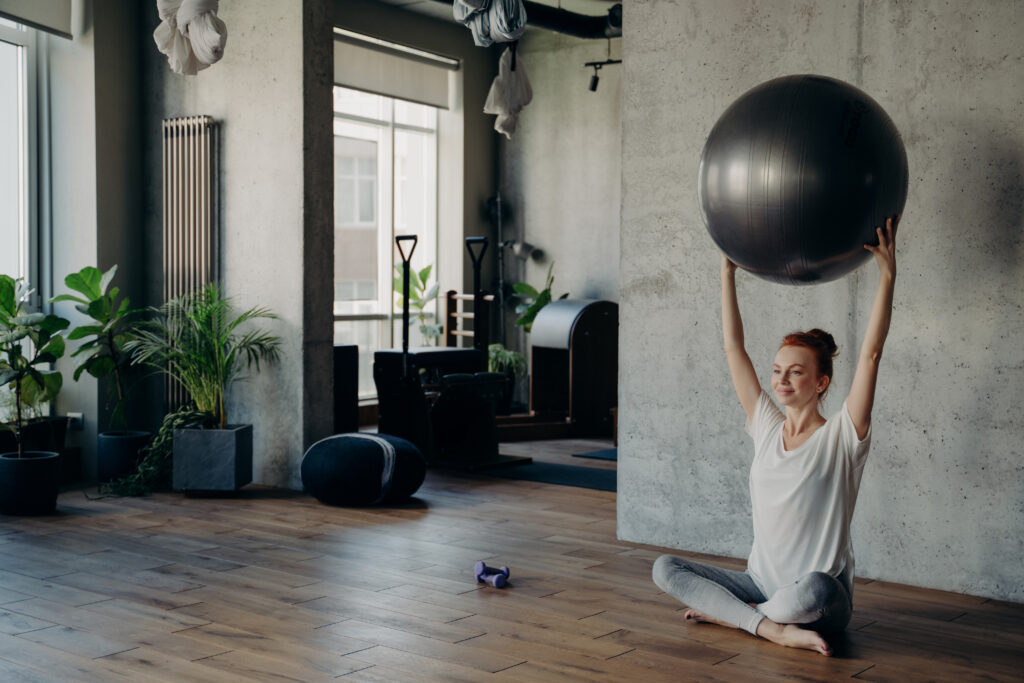Scoliosis, a condition characterized by an abnormal curvature of the spine, often prompts individuals to explore various forms of exercise to manage and alleviate discomfort. One such popular choice is Pilates, renowned for its emphasis on core strength. Dr. Andrew Strauss talks about the ability of doing Pilates with scoliosis, exploring the benefits and considerations for incorporating Pilates into a scoliosis-specific exercise regimen.
Understanding the Importance of Core Strength in Scoliosis
For individuals dealing with scoliosis, maintaining a strong core becomes a pivotal aspect of managing the condition. The abnormal curvature of the spine can lead to imbalances in the muscles surrounding it, causing discomfort and potentially impacting daily activities. Pilates, with its focus on core strength and stability, emerges as a promising option for those seeking to address the challenges posed by scoliosis.
The Role of Pilates in Scoliosis Management
The allure of Pilates lies in its ability to engage and strengthen the core muscles, including the abdominals, obliques, and lower back. However, it’s crucial to recognize that Pilates alone may not be a comprehensive solution for scoliosis management. The key is integrating Pilates into a scoliosis-specific exercise program. This approach ensures a holistic strategy that addresses the unique needs of individuals with scoliosis.
Pilates as a Component, Not an Exclusive Solution
While Pilates is undeniably beneficial for enhancing core strength, it is not a standalone remedy for scoliosis. Merely relying on Pilates exercises without considering the broader context of scoliosis management might not yield optimal results. It is essential to view Pilates as a component rather than the entirety of a fitness routine tailored to address the complexities of scoliosis.
Designing a Scoliosis-Specific Exercise Program
To maximize the benefits of Pilates for scoliosis, individuals should collaborate with healthcare professionals, such as physical therapists or certified Pilates instructors with expertise in scoliosis management. A tailored exercise program considers the curvature of the spine, individualized needs, and any potential limitations.
Benefits of Pilates for Scoliosis
1. Core Strengthening
Pilates targets the core muscles, promoting strength and stability. Strengthening these muscles helps individuals with scoliosis maintain better posture and alleviate strain on the spine.
2. Improved Flexibility
Scoliosis can lead to stiffness in certain areas of the spine. Pilates emphasizes controlled movements and flexibility, aiding in increasing range of motion and reducing stiffness associated with scoliosis.
3. Enhanced Body Awareness
Pilates encourages heightened body awareness, a crucial aspect for individuals with scoliosis. By focusing on alignment and posture, individuals can better understand and manage their body’s responses, minimizing discomfort.
4. Low-Impact Nature
The low-impact nature of Pilates makes it suitable for individuals with scoliosis, as it minimizes the risk of exacerbating spinal issues. This aspect is particularly beneficial for those who may find high-impact exercises uncomfortable.
Considerations When Doing Pilates with Scoliosis
While Pilates can offer numerous advantages, it’s essential to approach it with care, especially for individuals with scoliosis. Here are some considerations:
1. Consultation with Healthcare Professionals
Before embarking on a Pilates routine, individuals with scoliosis should consult with their healthcare providers. This ensures that Pilates is a suitable addition to their exercise regimen and that any potential risks are identified.
2. Instructor Expertise
Choosing a Pilates instructor with expertise in scoliosis is crucial. An instructor familiar with the nuances of the condition can tailor exercises to address specific challenges and adapt the routine based on individual needs.
3. Customization of Exercises
Not all Pilates exercises may be suitable for individuals with scoliosis. Customization is key, with an emphasis on exercises that strengthen the core without putting undue stress on the spine.
4. Gradual Progression
Individuals should approach Pilates with a focus on gradual progression. Sudden, intense workouts may lead to muscle soreness and discomfort, potentially exacerbating issues related to scoliosis.
Success Stories: Pilates and Scoliosis
Dr. Strauss highlights the positive impact of Pilates on individuals dealing with scoliosis. Many patients have experienced significant benefits, ranging from reduced pain to improved overall well-being. Success stories underscore the potential of Pilates when integrated into a comprehensive scoliosis management plan.
Pilates as a Supportive Element in Scoliosis Management
In conclusion, Pilates can be a valuable addition to the toolkit for managing scoliosis. Its emphasis on core strength, flexibility, and body awareness aligns with the needs of individuals with this condition. However, it is crucial to view Pilates as a supportive element rather than a standalone solution. Collaboration with healthcare professionals, customization of exercises, and a gradual approach are key components in harnessing the benefits of Pilates for scoliosis. By integrating Pilates into a scoliosis-specific exercise program, individuals can embark on a journey towards improved core strength, reduced discomfort, and enhanced overall well-being.
Also read: Can Scoliosis Affect my Height?
About:
Dr. Strauss is the director of the Hudson Valley Scoliosis Correction Center in New York. He has been actively engaged in scoliosis treatment for the past 30 years and has authored two books on the subject, Your Child Has Scoliosis and The Truth About Adult Scoliosis.
He is Vice President of the CLEAR Scoliosis Institute and a lecturer for their introductory and advanced workshops. He is certified in scoliosis bracing and in the use of scoliosis specific exercises. Dr. Strauss is a graduate of the ISICO World Masters of Scoliosis.His postgraduate studies also include a Masters Degree in Acupuncture as well as training in Grostic, Pettibon, CBP, Clinical Nutrition, Chinese Herbal Medicine, Manipulation under Anesthesia, and Electrodiagnosis.
His scoliosis practice has treated patients from 25 states and 32 other foreign countries.If you have questions about childhood and adult scoliosis and how it can be successfully treated without surgery subscribe to our channel!
